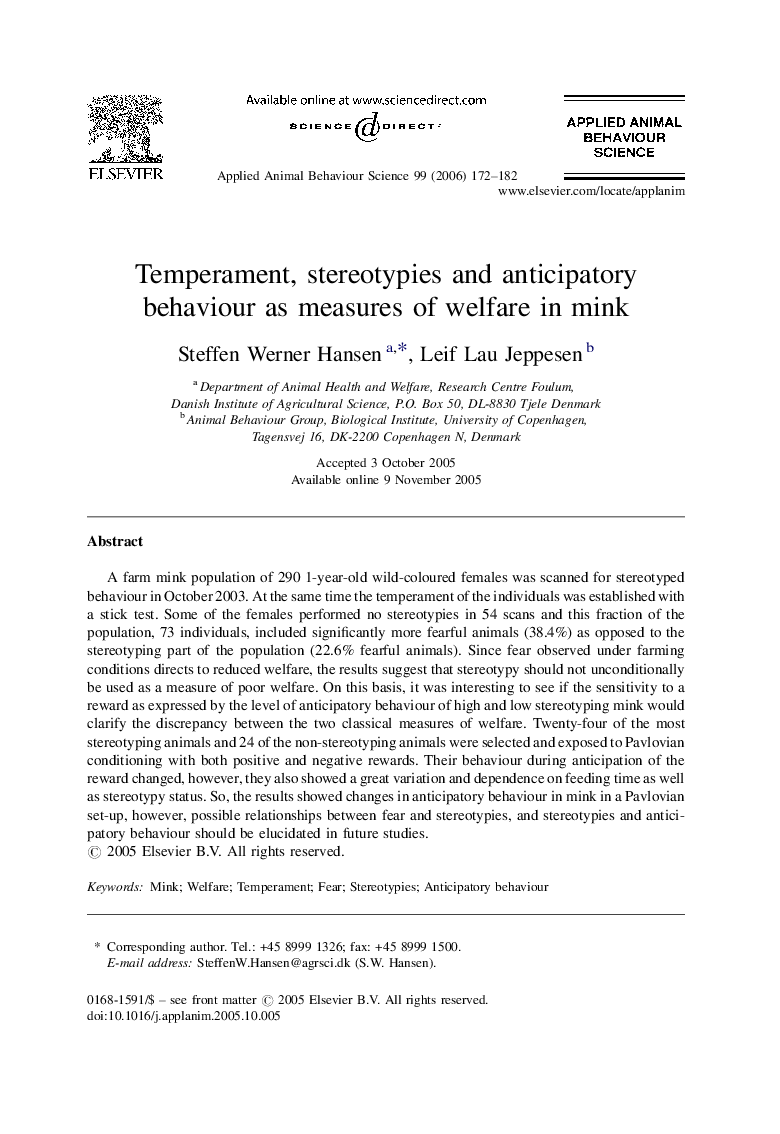| کد مقاله | کد نشریه | سال انتشار | مقاله انگلیسی | نسخه تمام متن |
|---|---|---|---|---|
| 4524210 | 1625444 | 2006 | 11 صفحه PDF | دانلود رایگان |

A farm mink population of 290 1-year-old wild-coloured females was scanned for stereotyped behaviour in October 2003. At the same time the temperament of the individuals was established with a stick test. Some of the females performed no stereotypies in 54 scans and this fraction of the population, 73 individuals, included significantly more fearful animals (38.4%) as opposed to the stereotyping part of the population (22.6% fearful animals). Since fear observed under farming conditions directs to reduced welfare, the results suggest that stereotypy should not unconditionally be used as a measure of poor welfare. On this basis, it was interesting to see if the sensitivity to a reward as expressed by the level of anticipatory behaviour of high and low stereotyping mink would clarify the discrepancy between the two classical measures of welfare. Twenty-four of the most stereotyping animals and 24 of the non-stereotyping animals were selected and exposed to Pavlovian conditioning with both positive and negative rewards. Their behaviour during anticipation of the reward changed, however, they also showed a great variation and dependence on feeding time as well as stereotypy status. So, the results showed changes in anticipatory behaviour in mink in a Pavlovian set-up, however, possible relationships between fear and stereotypies, and stereotypies and anticipatory behaviour should be elucidated in future studies.
Journal: Applied Animal Behaviour Science - Volume 99, Issues 1–2, August 2006, Pages 172–182